Revolving Community Loans for “Water From Allah”
by Brad Lancaster
www.HarvestingRainwater.com
Number 4 in a series of Drops in a Bucket blog posts on Brad Lancaster’s and David Eisenberg’s U.S. State Department-sponsored adventures and gleanings in the Middle East
Northern Jordan, April 2009
Throughout northern Jordan we visited dynamic villages that were enhancing their quality of life by recycling water and money as close to their sources as possible.
The money is recycled primarily via revolving community-loan funds. Here is how it works: a village collectively gathers a pot of money, a portion of which is lent out to its villagers to fund projects the village has deemed worthy. The most popular projects are those that recycle water with rainwater-harvesting cisterns and greywater-harvesting systems, while others used their loans to finance composting projects, organic gardens and orchards, and small livestock – all investments that increase local productivity along with the resiliency and sustainability of the village and its natural resources. A villager who receives a loan has two and a half years to pay it back, interest free. The money can then be lent out to yet another villager. The village’s productivity keeps improving with the investments, enabling the village to give itself more loans, continuing the upward spiral of recycled investments that stay in the community. Neither non-locally owned banks nor interest drain off the profits.
Turning $20 into $400 by slowing, spreading, and sinking it like water
The value of these funds is increased even further when it cycles multiple times within the same community. This added boost can be assured by hiring fellow villagers to help with the work or provide locally obtained materials for the projects. For example, when $20 is cycled or invested within a community 20 times (you give it to a local carpenter, who gives it to a local woodsman, who gives it to a local baker, who gives it to a local produce seller, etc.), its effective value is increased to $400 ($20 x 20). But if that $20 were spent in a national or multi-national chain store on imported goods, the bulk of the $20’s benefit in the community would be rapidly drained away, reducing its value in the community to something more like 50 cents, maybe even less. Those 50 cents might go to the local clerk’s paycheck, while the rest would flow to the distant corporate office and distributors.
In the most sustainable of cases, the revolving-loan fund is seeded by the village itself, with each villager chipping in an equal amount of money to create the fund. But most of the villages I visited got their initial loan-fund monies from grants allocated by such NGOs as Mercy Corps, JOHUD, and CARE International. The conditions that had to be met in order to receive the loan-fund seed money were that the village had to have an equitable means of making community decisions where no family or individual would dominate, and men and women had to have equal say throughout the decision-making process.
The Growing Tank Culture of Whadneh
In the village of Whadneh, as in much of the majority world, municipal water comes to homes and businesses only once a week, and in summer as many as three weeks can pass between opportunities to replenish one’s water supply. In some areas there is no municipal water or too little of it, and water needs to be trucked in. Thus tanks are on every rooftop to catch whatever water they can when the municipal water lines are flowing. That water can then be distributed via gravity to any point below the tank. The Jordanian government even mandates (but does not necessarily enforce) that water tanks must be installed in the base of every building, as well. These tanks are meant for the storage of municipal water, but they can instead (or also) be used to capture roof runoff. A water-tank mentality and culture already exists, so it is relatively easy to shift to the storage of a more sustainable water source – rainwater.
I believe that the inexpensive and distributed capture of on-site water should always precede the very expensive transport of distant water (as in the centralized Red Sea Dead Sea Canal project), especially since harvesting such water often eliminates, or at least greatly reduces, the perceived need for that distant water and the huge amounts of power and fuel required to transport it.
Ali Flahmohammad Khtatabh, the Imam of Whadneh, proudly showed me the 2,500 Jordanian dinars’ worth (as of this posting, equivalent to over US$3,500) of cisterns the village loan fund had financed at his home and the homes of his children. He was the first in his village to install cisterns, and as its spiritual leader, he made it clear that the harvest of rainwater was in alignment with both the teachings of the Koran and good sense. He was so happy with the cisterns that he kept building more.
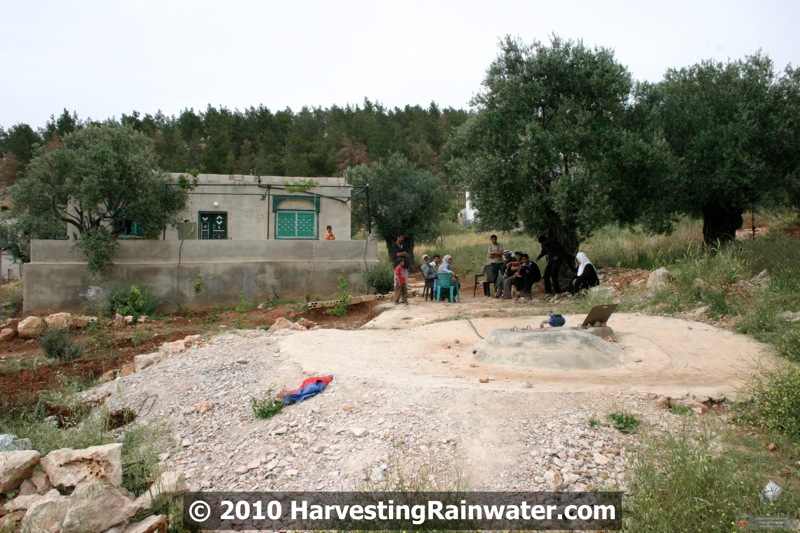
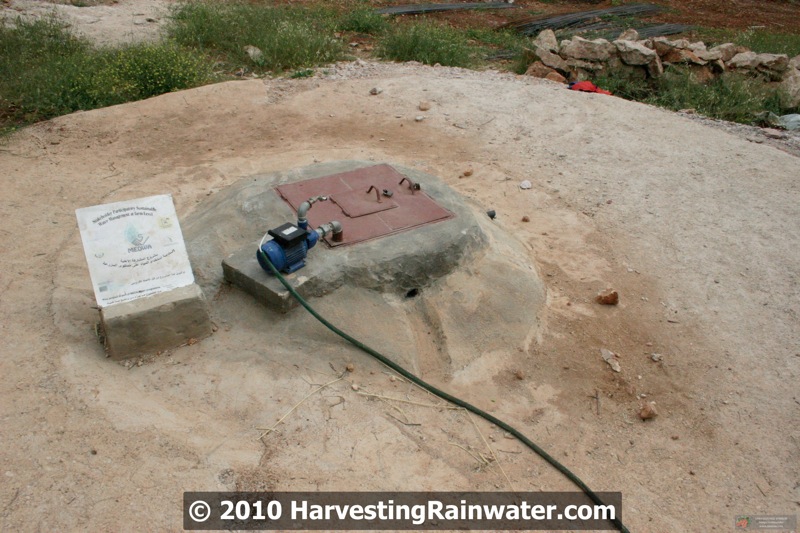
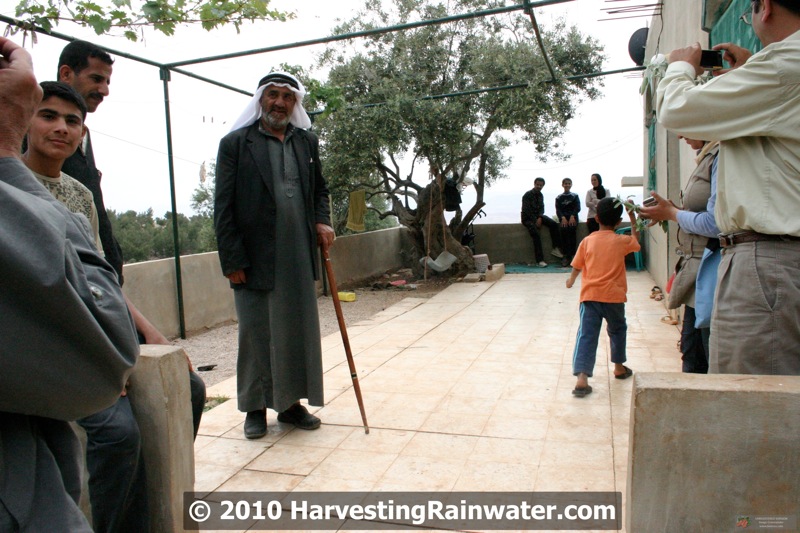
When I asked Ali Flahmohammad Khtatabh which he preferred: rainwater or municipal water, he replied, “Rainwater of course, it tastes better, and it is the water that comes direct from Allah!” What’s more, Ali’s family has far more control over this water than they do over the municipal water supply.
That harvested rainwater then goes even further through its reuse as greywater for irrigation.
Greywater
The vast majority of greywater systems I saw in Jordan directed household greywater via gravity to reed beds: plastic-lined, gravel filled basins planted with riparian reeds. The reeds helped filter the greywater, which was then collected in a plastic barrel from which water could be pumped through a hose to the landscape.
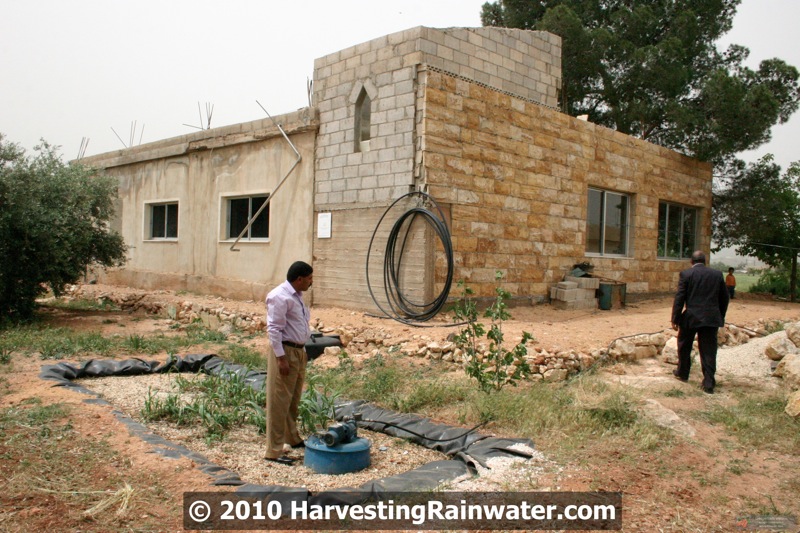
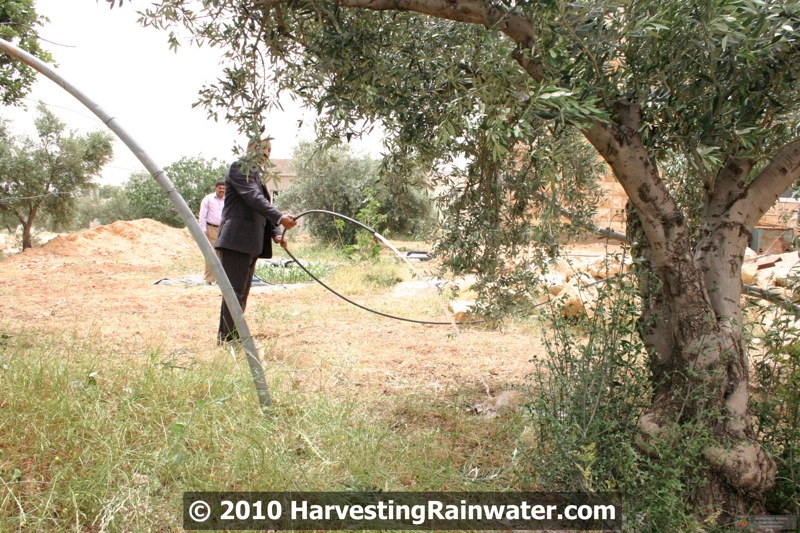
All household greywater, including kitchen-sink water (“dark greywater” that some consider blackwater due to the greater amount of organic matter it contains), is directed to these systems. The reed beds are used to help treat/filter the kitchen-sink water and its ample fats, organic bits, and soap goop; however, since the reeds are riparian species they tend to consume large quantities of the greywater that might otherwise be used to irrigate less-water-needy fruit trees.
Riparian plants also require a constant supply of water. If a family leaves for a few weeks without leaving the water running, the reeds can die. I saw many reed beds without any reeds. In addition, the barrels collecting the greywater are often a source of odors. When you store greywater in a tank it starts to stink, thus I typically prefer direct discharge of greywater to multiple points of mulched, vegetated soil. And I question both the reliability and cost of operating pumps in low-income communities where the power supply can be as sporadic as the water supply. There seems to be room for improvement on this system.
A Gravity-Fed Greywater-Harvesting Option
I think there is a great opportunity here to experiment with entirely gravity-fed, tankless branched-drain and multi-drain greywater systems. I’d be very interested in how well they’d fare and be accepted. If implemented, these systems would distribute greywater to multiple points rather than to just one. Kitchen-sink water could be directed to separate, smaller systems. We installed one such system in the Palestinian village of Marda in June 2010 – follow this link for photos.
With such multi-point distributed-greywater systems I have often found reed bed infiltration to be unnecessary for kitchen-sink dark greywater, as long as the bulk of the kitchen organic matter goes into a compost bin instead of down the drain, and appropriate soaps are used. (See Chapter 12 of Rainwater Harvesting for Drylands and Beyond, Volume 2 for more on these systems. Visit the greywater-harvesting image gallery on my site for additional photos.)
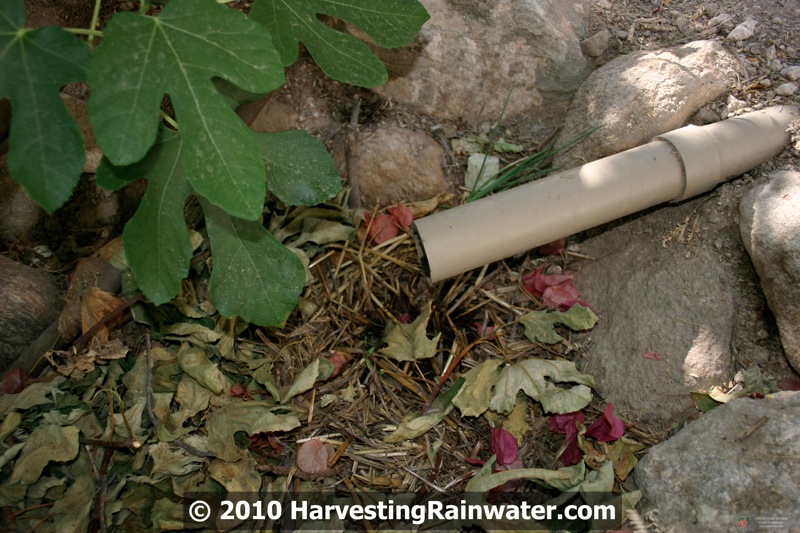
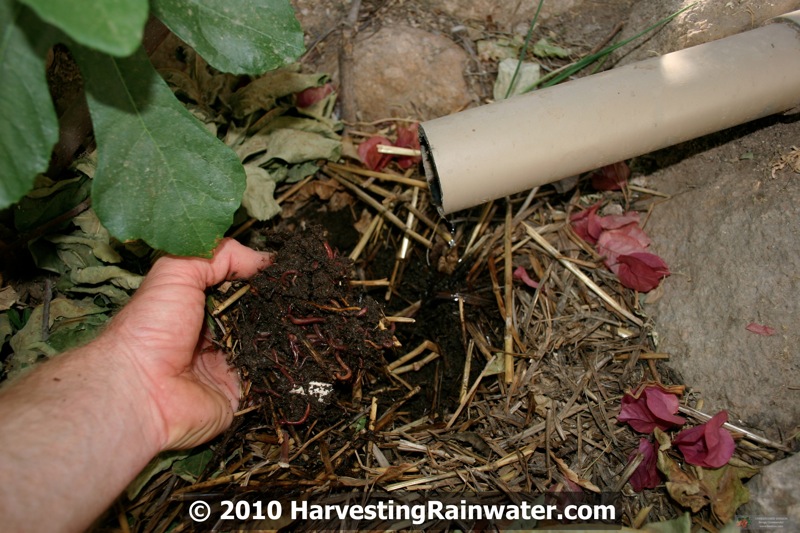
Greywater-Appropriate Soaps and Detergents
Greywater-appropriate soaps can be hard to find in stores outside the U.S. and Europe, but this can change.
Mohammed Ayesh of NCARE, a government agricultural-extension-like organization that supports many of the revolving-community-loan-funded efforts, informed me that Dr Murad Bino, Executive Director for the Islamic Network on Water Resources Development & Management, had worked with a local Jordanian soap manufacturer to develop sodium-free soaps and detergents for use with greywater systems in Jordan (this is necessary since sodium, or salt, is a killer in these alkaline dryland soils). But apparently these soaps are no longer being produced, since the grant that was funding the project has run out. Hopefully production and use can be restarted, this time with a business plan that will keep everything functioning without dependence on grants. There is a huge need. Everywhere I traveled in the Middle East, greywater harvesting is being researched and promoted. The missing link is appropriate, locally made biocompatible soaps, shampoos, detergents, and cleansers.
Banning of Toxic Soap Ingredients
Israel is the first country (to my knowledge) that has gone so far as to ban certain soap ingredients that are harmful to soils. During my 2010 trip to the Middle East I learned that Israel has banned the inclusion of boron in any soaps or detergents sold there. Israel reuses 61% of its wastewater, primarily as an agricultural-irrigation source. The ban was put in place after it was found that boron from soaps and detergents going down the drain before the ban had been killing crops irrigated with treated wastewater.
(Follow this link for more on greywater-compatible soaps.)
Conclusion
If we are to continue as a species, we need to be more conscious of the resources we use (water, power, money, soil, food, etc). Where do we get them from? What do we do with them? Do we degeneratively dispose of them after a single use? Or do we regeneratively cycle them for greater and greater potential of reuse and new life?
Revolving community-loan funds that invest in regenerative systems are an incredible way to do a lot more with a lot less, by reconnecting people with their money-resource flow much like water-harvesting does with the water flow. Link the two as is being done in Jordan, and you have something really juicy!
See the new, full-color, revised editions of Brad’s award-winning books
– available a deep discount, direct from Brad:

Volume 1

